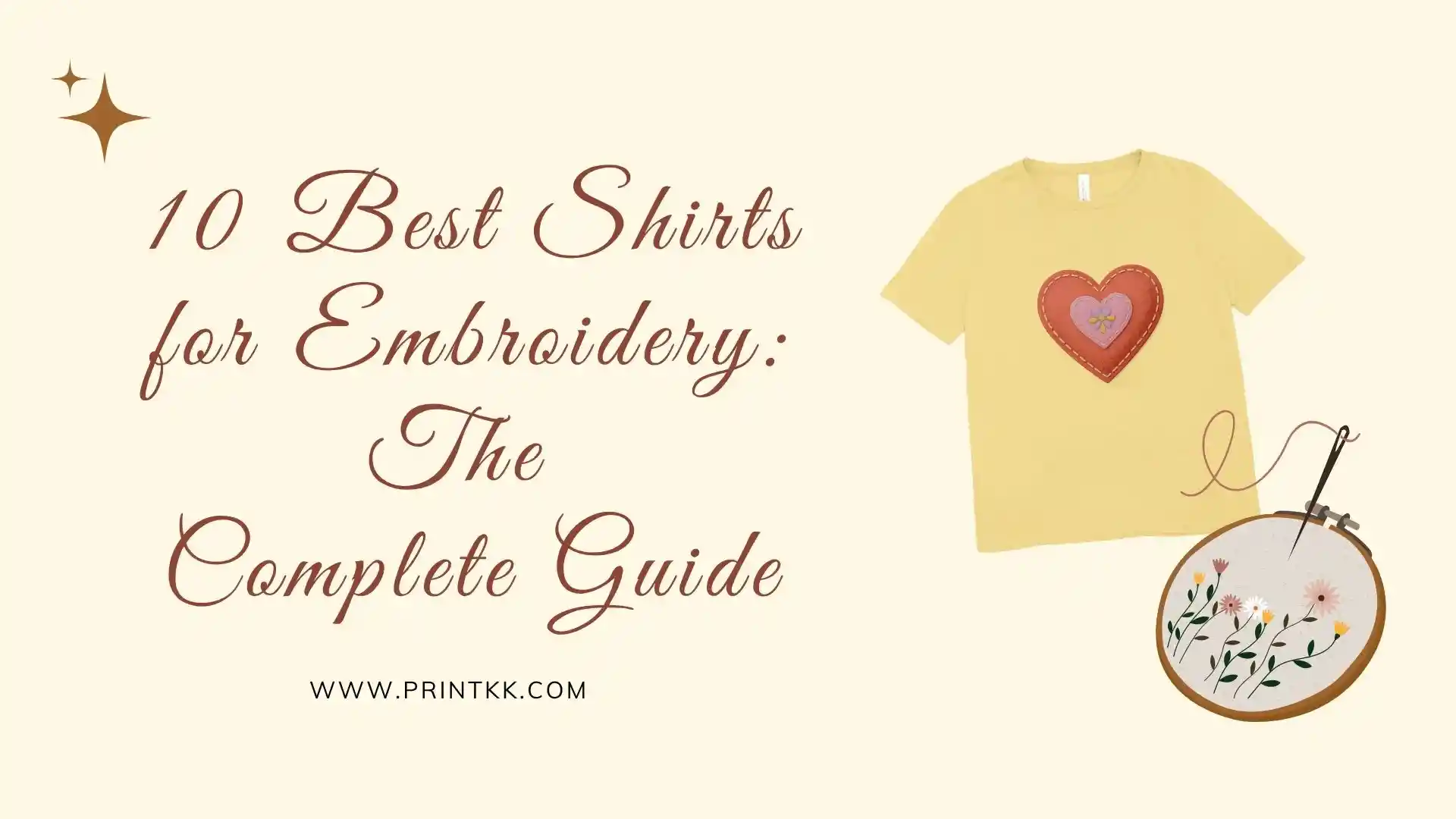
Finding the perfect shirt for embroidery can make all the difference between a professional-looking design and one that puckers, distorts, or fades after a few washes.
Whether you're creating custom merchandise, team uniforms, or personalized gifts, choosing the best shirts for embroidery ensures your designs look sharp, vibrant, and durable.
In this guide, we'll break down the top options available, explore the fabrics and fits that work best, and share practical tips to help you get flawless embroidery every time.
Find 10 Best Shirts for Embroidery
Hanes Beefy‑T Unisex Heavyweight
Material: 100% cotton
Best Embroidery Areas: Front chest, shoulders
Beefy‑T is thick and resilient. It won't sag under heavier embroidery, so you can stitch larger designs with confidence.
If you plan to sell custom shirts, this one keeps your embroidery looking crisp over time. The shoulders and chest panels are wide enough to handle most logos without distortion.
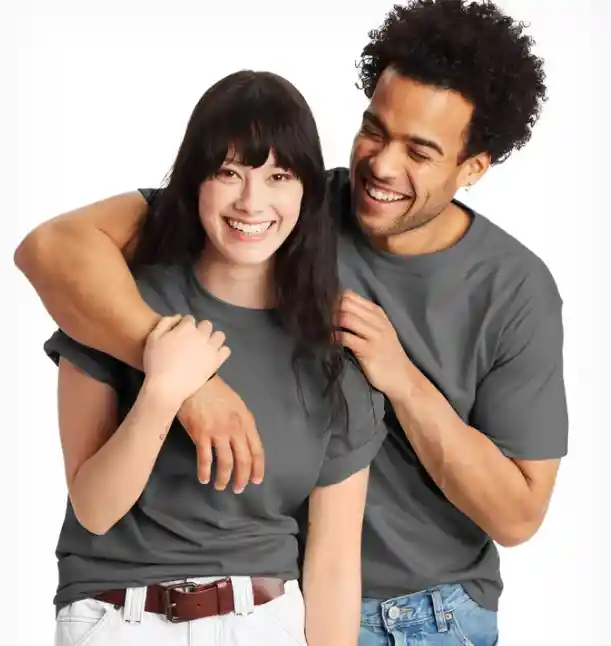
Hanes Beefy-T Unisex Heavyweight Cotton T-Shirt (Big & Tall Sizes Available)
Hanes Authentic Men's T-Shirt (Big & Tall Sizes Available)
Material: 100% cotton (most colors), cotton/poly blends for some colors
Best Embroidery Areas: Front chest, shoulders
This classic men's crewneck tee is a wardrobe staple. With a lay-flat collar and sturdy shoulder-to-shoulder taping, it keeps its shape and holds up over time.
The smooth interior (tagless or tearaway tag) makes it comfortable for all-day wear. Available in Big & Tall sizes up to 6XL, this tee handles most embroidery designs without distortion, keeping your custom logos crisp and clear.

Hanes Authentic Men's T-Shirt (Big & Tall Sizes Available)
Hanes Essentials Unisex Cotton T-Shirt
Material: 100% cotton (most colors), some cotton/polyester blends
Best Embroidery Areas: Front chest, shoulders
This Essentials unisex tee is soft, comfortable, and versatile—perfect for everyday wear.
The classic crewneck and roomy cut make it easy to layer or wear on its own. Reinforced stitching and shoulder-to-shoulder taping provide durability, so it holds up well under embroidery.
Available in Big & Tall sizes, it keeps designs crisp and looks great wash after wash.

Hanes Essentials Unisex Cotton T-Shirt
Women's Micro Rib 3/4 Raglan Baby Tee
Material: 52% Airlume combed and ring-spun cotton, 48% polyester (Athletic Heather: 90% cotton, 10% polyester)
Best Embroidery Areas: Front chest, shoulders
This iconic baseball-style tee combines a flattering fitted silhouette with 3/4 contrast raglan sleeves for a stylish, sporty look.
The 1x1 micro rib fabric is soft, stretchy, and pre-shrunk, making it perfect for detailed embroidery. Side-seamed construction and mid-length hem provide a polished fit that keeps designs crisp and professional.
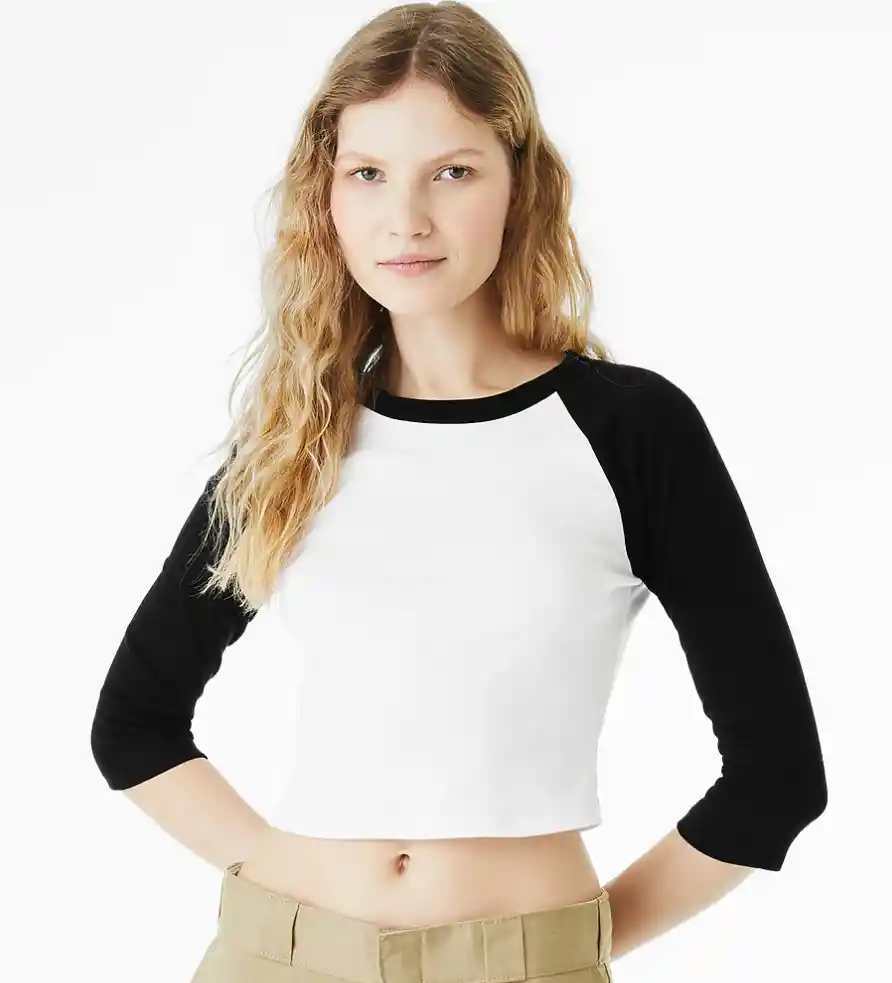
Women's Micro Rib 3/4 Raglan Baby Tee | BELLA+CANVAS
Unisex Jersey Short Sleeve Tee
Material: 100% Airlume combed and ring-spun cotton (Ash: 99% cotton, 1% polyester)
Best Embroidery Areas: Front chest, shoulders
This best-selling unisex tee combines a classic crewneck with a tailored, comfortable fit.
Crafted from soft Airlume combed and ring-spun cotton, it provides a smooth surface perfect for embroidery or printing.
Side-seamed construction and shoulder taping enhance durability, keeping designs crisp and well-positioned. Available in XS–5XL and 86 colors, it's an everyday essential that holds up wash after wash.

Unisex Jersey Short Sleeve Tee
Next Level 7200 Heavyweight T-Shirt
Material: 100% combed ring-spun cotton (Heather Grey: 90% cotton, 10% polyester)
Best Embroidery Areas: Front chest, shoulders
Thick and durable 6.8 oz fabric keeps its shape under heavier embroidery. Relaxed fit and classic crewneck provide comfort and a modern street-ready look.
Shoulder-to-shoulder binding ensures long-lasting wear, making this tee perfect for casual or layered outfits.
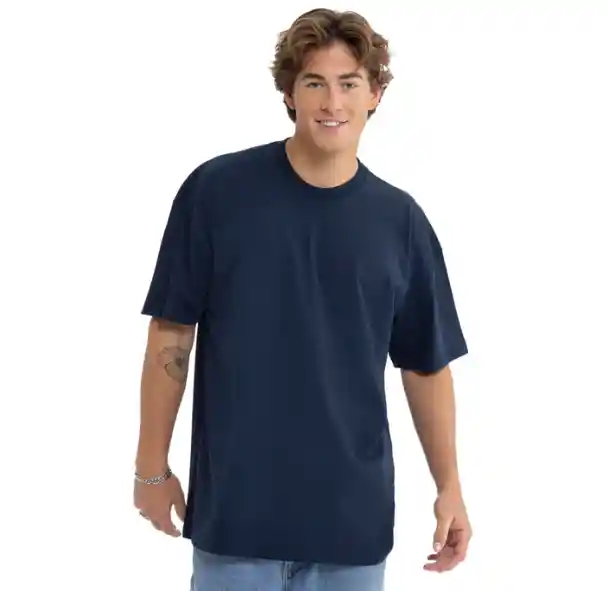
Heavyweight T-Shirt - Clay | 7200 | Next Level Apparel
Unisex Cotton T-Shirt Customized Services (Made in USA)
Material: 100% cotton
Best Embroidery Areas: Front chest, shoulders
Made in the USA with soft, breathable cotton, this unisex tee offers comfort and durability.
Moderate fabric thickness keeps it lightweight yet warm, and fine stitching ensures it retains shape and color after multiple washes.
Designed for single-sided DTF printing, it's ideal for custom designs. Perfect for everyday wear, sports, or layering under jackets.
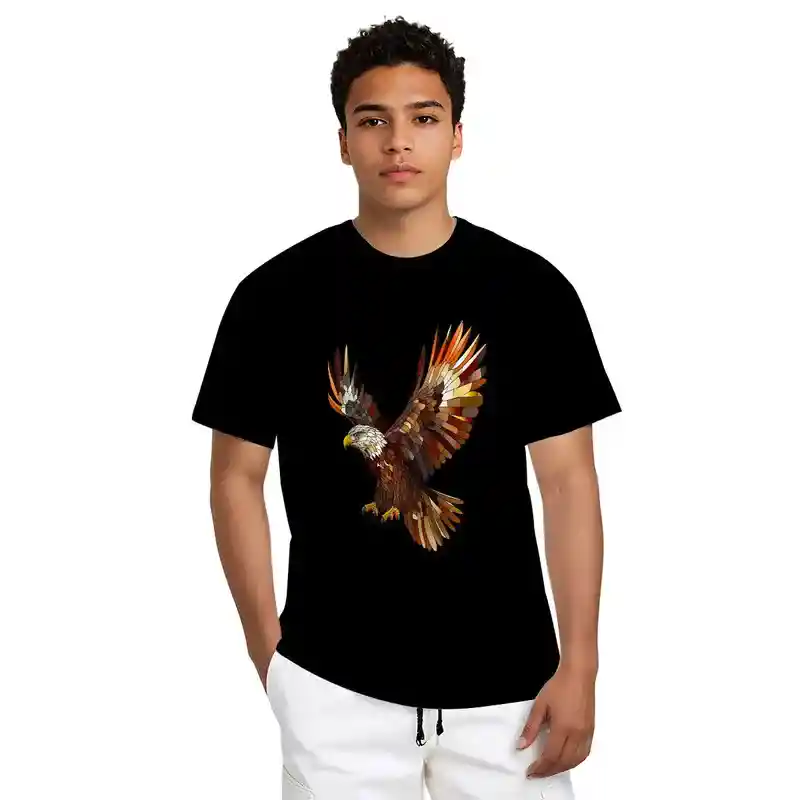
Unisex Cotton T-Shirt (Double-sided Designed) – Made in USA
Material: 100% Cotton
Best Embroidery Areas: Front and back panels
Soft, breathable, and durable cotton holds its shape wash after wash.
Designed for double-sided printing, this unisex tee is perfect for showing custom designs on both front and back. Modern fit works for layering or wearing alone. Available in sizes S–XL.
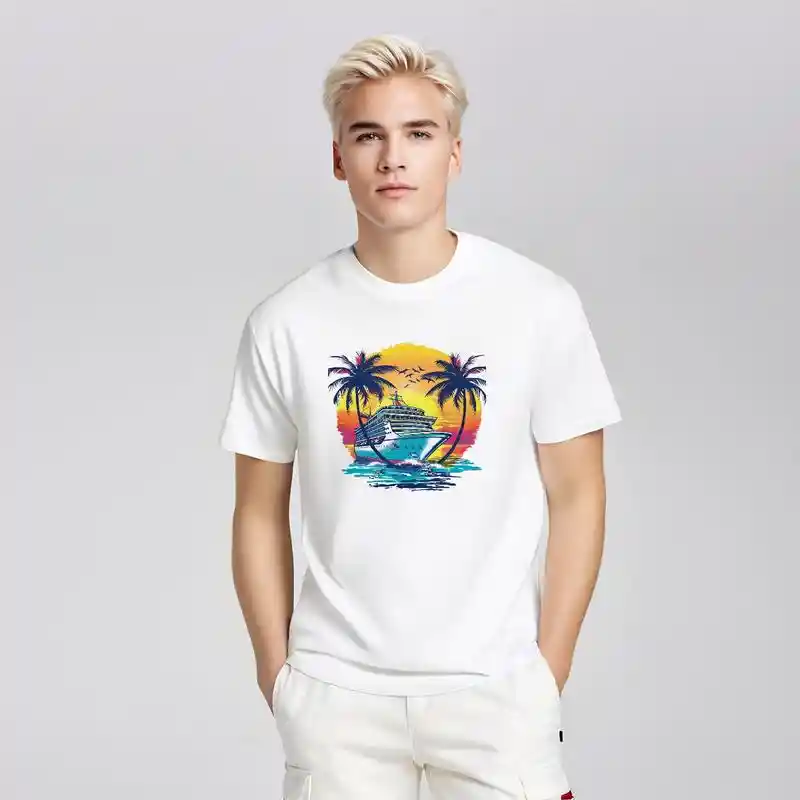
Short-Sleeve Crop Top for Women – Made in USA
Material: 100% Polyester
Best Embroidery Areas: Front chest
This crop top balances style and function. The lightweight polyester keeps you cool while moving, and the slim cropped fit pairs easily with high-waisted pants, skirts, or shorts.
Its single-sided printing area works well for bold or detailed designs without losing clarity.
Great for everyday wear, workouts, or layering under jackets, it adapts to different looks while holding its shape through repeated washes.
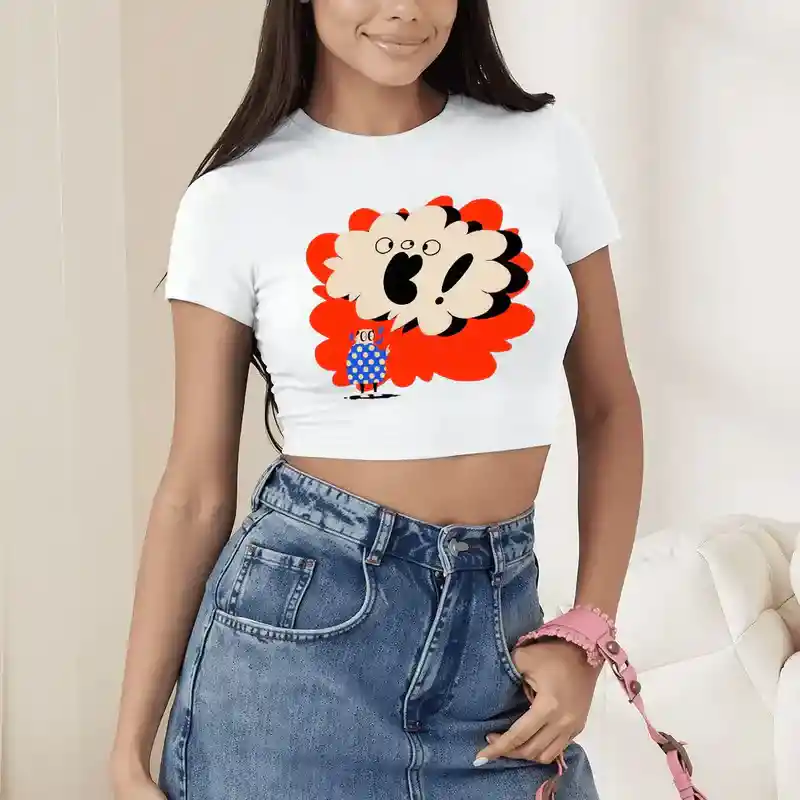
Custom Short-Sleeve Crop Tops for Women (Made in USA) - Print on Demand Fulfillment - PrintKK
Kids' Cotton T-Shirt – Made in USA
Material: 100% Cotton
Best Embroidery Areas: Front chest
Soft, breathable cotton keeps kids comfortable all day, whether at school, playing outside, or hanging out with family.
The durable fabric holds its shape and color after repeated washes, so designs stay looking sharp. Its classic cut works well on its own or layered under jackets and hoodies.
Available in sizes XS–XL, this tee makes it easy to create fun, lasting custom designs for children.
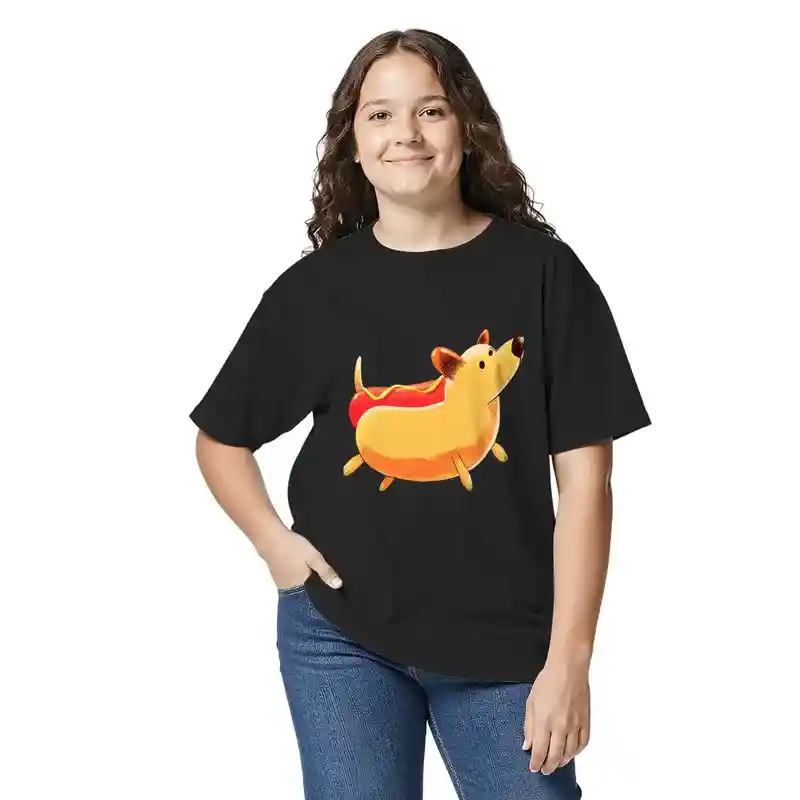
Custom Kids' Cotton T-Shirt (Made in USA) - Print-On-Demand - PrintKK
Which Shirt Fabric Types Are Ideal for Embroidery?
Cotton: The Classic Choice
When it comes to embroidery, cotton shirts are a top pick. They are soft, breathable, and easy to work with.
The fibers hold embroidery threads nicely, so your design will look crisp and neat. Cotton is also durable, which means your embroidery won't warp after a few washes.
If you want something that feels comfortable and shows off your design perfectly, cotton is a safe bet.
Polyester and Cotton Blends: The Best of Both Worlds
Polyester-cotton blends are great if you want a shirt that resists wrinkles but still works well with embroidery.
These fabrics give your embroidery stability without being too stiff. They are slightly stretchy, which makes them less likely to pucker when stitched. Here's why you might like them:
- Easy to maintain and wash
- Smooth surface for detailed designs
- Less shrinkage than pure cotton
Linen: Light and Breathable
Linen is ideal if you want a shirt that feels light and airy. It works best for larger, simpler embroiderydesigns because the fabric has a natural texture.
Linen can wrinkle easily, but many people love the relaxed, stylish look it gives.
Your embroidery will look charming on linen, especially if you use bold threads that stand out against its natural weave.
Avoid Very Stretchy Fabrics
While fabrics like spandex or jersey feel great to wear, they are tricky for embroidery.
The stretch can cause your stitches to warp or pull. If you love stretchy shirts, you might need to use a stabilizer underneath to protect your design.
Otherwise, stick with fabrics that hold their shape for the best results.
The Best Weight T-Shirt for Embroidery
Light T-Shirts (Under 5 oz)
If your shirt is very light, embroidery can be tricky. The fabric may stretch or pucker, especially with larger designs. You can still embroider on these shirts, but:
- Stick to small, simple designs.
- Consider using extra backing to prevent the stitches from pulling the fabric.
Keep in mind, lighter shirts are often better for printing rather than embroidery.
Medium T-Shirts (5–6 oz)
This is a safer zone for embroidery. Medium-weight shirts:
- Hold the stitches better than super light shirts.
- Still feel soft and comfortable to wear.
- Work well with most everyday designs.
If you want your embroidery to last and look crisp, adding a backing is still a good idea.
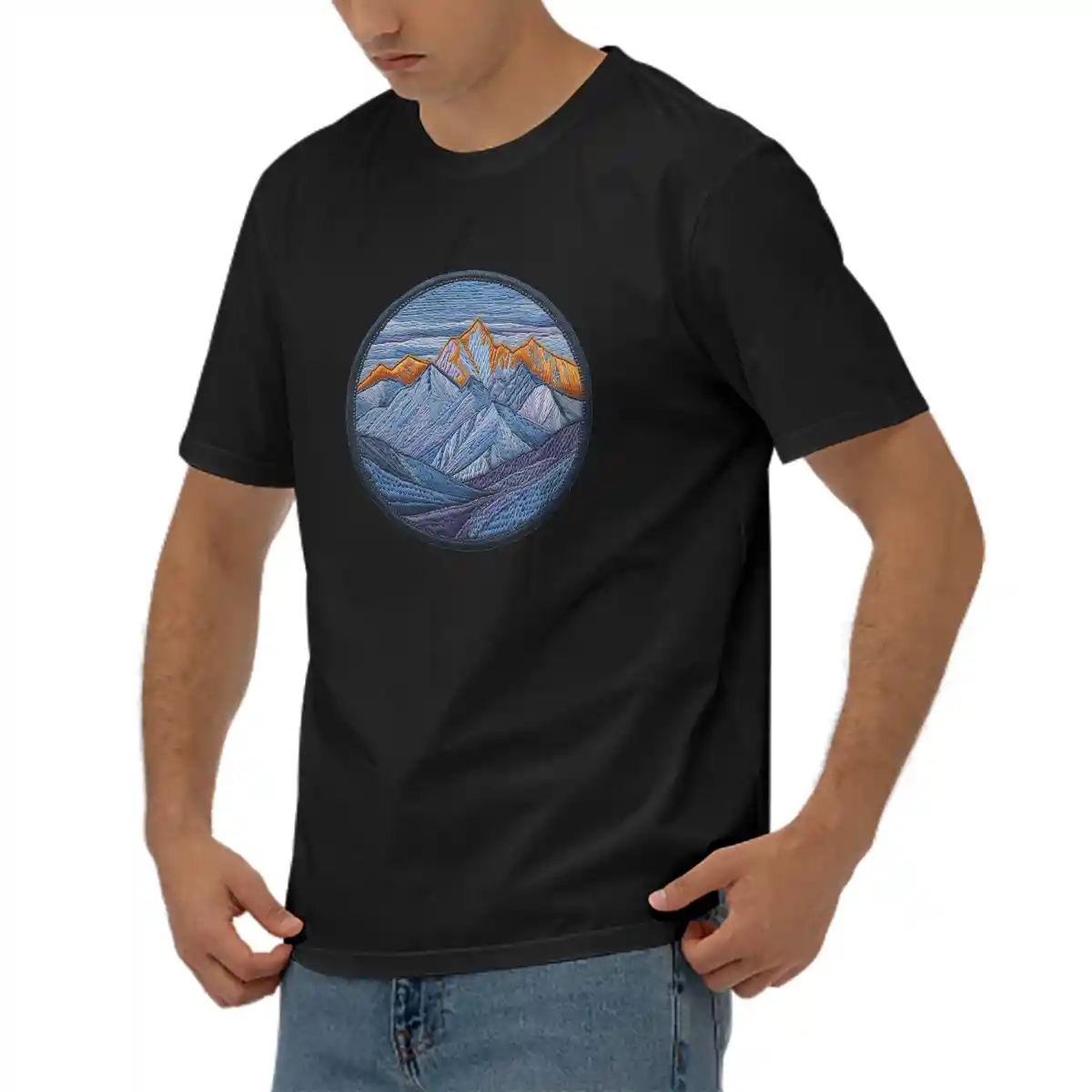
Print On Demand Men's Combed Cotton Short-Sleeved T-Shirt - PrintKK
Heavy T-Shirts (6 oz and above)
For the best results, go for heavier shirts. These shirts support embroidery without sagging or puckering. Benefits include:
- Large or dense designs stay flat and neat.
- The shirt keeps its shape even after multiple washes.
- You don't need to overthink backing, though a cutaway can help with very detailed designs.
Heavier shirts may feel a bit thick, but they give your embroidery a professional, long-lasting finish.
What Types of Embroidery Look Best on T-Shirts?
1. Simple Line Designs Work Everywhere
Start with simple line designs. Thin outlines, small shapes, or minimal words are your safest bet.
They stitch cleanly and don't make the t-shirt feel stiff. If you pick something too complicated, you'll end up with bunchy threads and a design that's hard to read.
Simple lines give a modern, clean look that works on almost any t-shirt color.
2. Bold Logos and Icons Grab Attention
Big, bold shapes always stand out. Logos, badges, or geometric icons look sharp on cotton or cotton-blend tees. Stick to clear edges and avoid tiny details.
This way, your embroidery pops and looks professional without needing hours of work.
3. Cartoon Characters Add Personality
Characters and cartoon designs give shirts a playful edge. Bright, solid colors work best, and avoid designs with too many tiny features.
Place them near the chest, sleeve, or back—they show off best there. A small, well-placed cartoon can make a plain tee feel custom-made.
4. Flowers and Nature Patterns Look Fresh
Floral embroidery doesn't have to be complicated. Small flowers, leaves, or vines along a pocket, sleeve, or hemline bring a fresh, handmade feel.
Stick to consistent stitching and don't overfill the design—sometimes less is more.
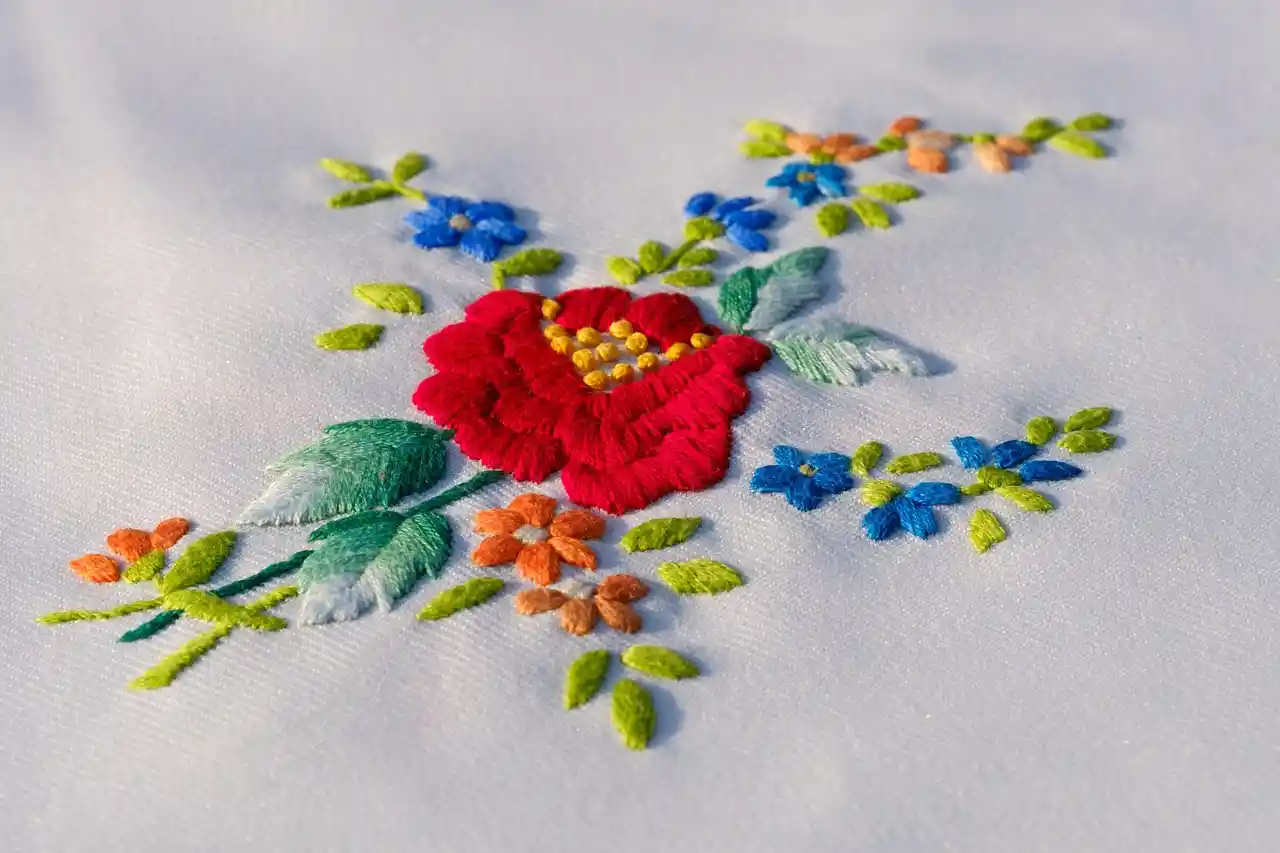
5. Words and Quotes Make a Statement
Adding a short quote or word is an easy way to personalize a shirt. Choose fonts that are bold and readable.
Thin or fancy script can get lost in the fabric. Embroider near the chest or along the hemline for maximum effect.
6. Textures and Patches Bring Dimension
Mixing thread types or adding small patches gives your t-shirt depth. Matte and shiny threads together make the design stand out without being too flashy.
This works great for small details like logos, icons, or borders. Layering textures keeps a shirt interesting without overcomplicating the design.
Read More:
- How to Make Custom Embroidery Designs: Guide for Beginners
- How to Make Your Own Embroidery Pattern for Print on Demand
How to Prepare Embroidery Artwork for Digitizing
1. Required File Formats for Digitizing
When preparing your artwork, start with clean, scalable files. Digitizers work best with vector formats like AI, EPS, SVG, or PDF. You can also use high-resolution PNG or JPG at 300 DPI.
Avoid screenshots, low-res images, or flattened web graphics—they make the digitizing process harder. Make sure all shapes are closed and free of half-transparent elements.
Clean artwork helps your design stitch better and reduces the need for revisions.
2. Minimum Line Thickness and Text Size
Embroidery has its limits. Thin lines or tiny text often fill in or distort when stitched. Keep lines at least 1.2–1.6 mm thick and sans-serif text at 0.25 inches (6–7 mm) or taller.
Avoid delicate serifs, hairline outlines, or distressed fonts. If your design has small details, thicken them before sending the file. This simple step ensures your design looks sharp on fabric.
3. Simplifying Artwork for Embroidery
Remember, embroidery isn't printing. Simple designs always stitch better. Convert gradients and shadows into solid shapes.
Remove micro-details, tiny gaps, and thin decorative lines. Also, increase spacing between elements to prevent stitches from merging.
Bold shapes with strong contrast work best. Simplifying your art not only makes it easier to stitch but also reduces thread usage and speeds up production.
4. Choosing Colors That Convert Well to Thread
Thread has a limited color range, so keep your colors embroidery-friendly. Stick to 3–6 colors for the cleanest results.
Avoid soft gradients, because thread cannot fade naturally. If you need exact color matches, provide Pantone codes. Keep in mind that thread sheen can make colors appear slightly different on fabric.
Picking the right colors helps your design stay accurate and easy to stitch.
5. Preparing Artwork Based on Fabric Type
Different fabrics behave differently. Lightweight or stretchy shirts do better with simple designs and fewer fills.
Heavy tees and fleece can support larger designs with more stitches. Ribbed or textured fabrics need bold shapes to avoid distortion. Tell your digitizer about:
- Fabric type and weight
- Stretch and color
- Any special texture or pattern
This info helps them adjust stitch density, underlay, and pull compensation so your embroidery looks perfect.
6. What Digitizers Need From You
The more details you give upfront, the smoother the process. Provide:
- The artwork file (vector or high-res)
- Final size (in inches or cm)
- Placement (left chest, center chest, sleeve, etc.)
- Fabric type and garment color
- Thread color numbers or requirements
- Notes on 3D puff, appliqué, or special techniques
Supplying all this info saves time, avoids errors, and ensures your design comes out exactly how you imagined.
Expert Tips
Choosing the right shirt makes a big difference in your embroidery projects. You want fabrics that are stable, smooth, and easy to stitch.
Pay attention to line thickness, text size, and colors to get the best results. Preparing your artwork properly saves time and avoids frustration.
Remember, different fabrics need different approaches. By understanding these points, you can create designs that look clean and sharp.
Whether you are stitching small logos or larger designs, focusing on quality helps. Overall, picking the best shirts for embroidery ensures your work stands out and lasts longer.
FAQs
What is the best T-shirt for embroidery?
Cotton t-shirts are usually the easiest to work with because they hold stitches well and don't stretch too much. Medium-weight fabrics give the most stable surface, while soft blends can also work if handled carefully.
Can you embroider on polyester?
Yes, polyester can be embroidered, but it tends to stretch and shift. Using a stabilizer and adjusting needle size helps prevent puckering. Stick to simple designs or tightly stitched patterns for best results.
How to stabilize a shirt for embroidery?
Place a stabilizer on the back of the shirt to keep fabric firm. Hoop it gently, so it's taut but not stretched. Tear-away or cut-away stabilizers are popular choices depending on fabric thickness.
Which embroidery is trending now?
Minimalist designs, small logos, and line-art illustrations are popular today. Simple text, nature-inspired patterns, and tiny playful icons are in style because they work on almost any t-shirt without feeling too crowded.










 Global Shipping
Global Shipping






 Made in USA
Made in USA























